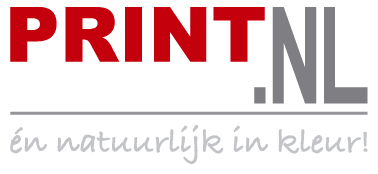A note in advance! Creating a 3-layer vector file is only necessary when printing white.
If only color is to be printed and no white is required as a standalone or spot color then any form of vector or even pixel-based files will suffice.
To make optimal use of the possibilities of the printer and the sharpest file, it is best to print from vector. Unfortunately, adding white in a vector file in the best way is a lot of work, especially if this has to be done afterwards. Since I try to calculate a fixed amount for everyone taking into account to keep the costs as low as possible, it is not possible to do such extensive work for that amount. If you cannot / do not want to do this yourself, I can do this but calculate an hourly rate of € 25 for this and for an average file I need at least an hour.
Right ... Not many people want to spend that money (I wouldn't myself either) for something they can do themselves. The easiest way to add the spot color layer for white is to take it into account when formatting the file. It is a bit tricky at first and may seem cumbersome, but once you get the hang of it it's hardly any extra work.
Working in 3 layers has great advantages for both of us:
- You have full control over the file and decide where and where not white need to be.
- I can assume that everything is set up as intended and can provide the file with the spot color information in a short time without checking or making adjustments
PS: If this is too much work, you can always print from png files. I then convert the vector to a png and add the white in the png file
This is less work than adding a vector spot color layer and yields about the same result.
For more information, read the article:
Vector VS PNG
Guidelines for the file
Before I explain the design of a 3-layer vector, I would like to outline the general guidelines for a vector file:
- Base the file on A4 or A3 format, 297x210mm or 297x420mm respectively
- Keep a space of at least 5mm around the file empty, this is for the printer margin that cannot print there
- Use a color profile: for RGB colors an "sRGB profile", for CMYK colors "Coated FOGRA39" or "Euroscale coated" and enclose this profile
- Make items the color you want, no adjustments will be made to the file unless it has been explicitly discussed and calculated in the assignment
- When cmyk + white is to be printed: make all items to be printed white also white in the file
- Embed (pixel) images, by default they are linked
- Convert texts into letter outlines / objects (since I don't own all fonts)
- Only use area fills and no outlines *, if you want to outline something, make this an offset object
- If background colors are used for checking, label them as "remove" or remove them yourself. A good contrast color for white control is #b5daf6, this color is quite similar to the blue backing of the decal paper
Working in 3 layers
The top layer: The black layer
All black items come in this layer, the reason that the black items are split is because they cannot be printed over white.
When printing black over white, the printer can get too hot and the print becomes smudged, black also does not turn black properly and may even turn gray.
This gives is usually not desired, therefore the black objects must be subtracted from the items on the spot color layer.
Because these items are on their own layer, it is easy to check whether they have been subtracted from the white layer.
The middle layer: The color layer
In this layer all colored items come all items that should be visible white (standalone), but without black items.
Black does not have to be subtracted from the colored items, it is seperating black from color which has to do with the next layer.
The bottom layer: The spot color layer
This is the layer where all the white has to go, both the standalone (visible) white and the spot color white which is below the colored items.
Actually this is a matter of: Color layer - Black layer = Spot color layer
Briefly the working method in illustrator (whether this works depends on how the file is set up)
- Make a copy of the color layer and a copy of the black layer
- Put these layers on top of each other in the layers window
- Turn off the visibility of the other layers
- Select everything on the color layer and black layer (cmd + a / ctrl + a)
- Go to pathfinder and select "Min-Front" (top row second from left)
- To check, select all items on this layer and fill them with a contrasting color a greenscreen-like green is often good eg #239740.
- After checking, set the color back to white, then I know that this is the spotcolor layer
If you experience problems with this method, this is often because you had outlines on objects, or texts were not converted to letter outlines.
Optional layer: The contrast color layer
This layer makes it easier to see the white items when you are editing the file.
A good contrasting color is #b5daf6 which reasonably matches the color of the paper backing of the decal paper.
You can leave this layer for me, then I switch it off, so I can also easily see where white is and where it is not.
